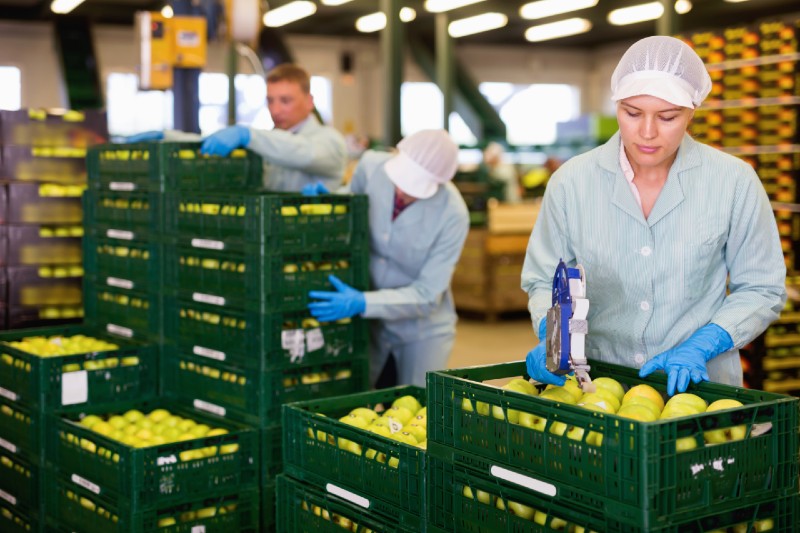Blue Yonder is committed to helping its customers face the unexpected. To provide insights into the COVID-19 coronavirus pandemic and its impact on supply chains around the world, we are delivering a blog series to help anyone looking for support and advice. Our experts, who have spent years in the supply chain industry, share their insights.
Retail sales declined 16% in April, according to a recent report from the Commerce Department, marking the largest two-month decline on record. As the COVID-19 crisis continues to keep many brick-and-mortar retailers closed, the industry is finding itself with excess inventory in many areas.
The mounting concern is that excess manufacturing is leading to increased inventory warehousing costs and is compounding the already-difficult financial situation. And not unique to the current state of the world, it’s also contributing to unnecessary landfill waste long-term, detracting from many organizations’ sustainability goals.
The good news is that organizations today have the means to reduce and prevent excess inventory and take a more proactive approach to their sustainability efforts by leveraging next-generation technologies, including artificial intelligence (AI) that better manage the ongoing volatility. Though the sustainability challenge grows more complex every day, these technologies can help businesses to operate responsibly (and profitably) via reduced waste, more efficient production, smarter transportation strategies, and reduced resource consumption.
As the COVID-19 crisis continues to persist, here are a few strategies companies are implementing to shield against excess inventory:
Forecasting
Forecasting demand, using AI and machine learning (ML), is one of the most effective ways. These advanced tools can detect obscure business patterns from hundreds of variables; including the weather, payday effects, social media, and events, to predict sales at the most granular levels.
The widespread toilet paper shortage that came in step with the coronavirus not only resulted in hilarious social media content, but it also sent shock waves to the supply chain. However, retailers that adopted forecasting solutions powered by AI and ML were in a better position to identify these trends at an early stage and respond to them quicker.
Specifically, those that saw the demand spike in February realized that it was all about volume and not about quality or brand. By identifying this trend, some responded by reducing their assortment down to only two types of toilet paper being sourced from a single supplier. This allowed them to streamline and make the supply chain more efficient.
Because these tools understand volume, they also know how retailers will be impacted by consumers who may be sitting on a four-month supply of toilet paper. They can analyze the pantry loading effect and adjust forecasts accordingly to prevent an over manufacturing problem.

Replenishment
In today’s digital world, supply and demand are continuously evolving. Making money comes down to putting the right product at the right price at the right time through any channel or location without overstocking. Replenishment tools powered by AI and ML can help retailers and manufacturers succeed by staging the right inventory quantities and responding to outside factors that may influence demand.
This task is especially daunting for manufacturers. Before products can be made available for purchase, the right amount of inventory must be built and precisely positioned across different network nodes to ensure 24-hour on-demand availability. This requires manufacturers to manage a large investment of inventory in their supply chains and flawlessly keep customers in stock. They must also avoid adding excess stock to their networks.
This inventory challenge is only growing with the COVID-19 pandemic, especially in the grocery space. For instance, according to recent research, the COVID-19 pandemic is accelerating consumer adoption of grocery auto-replenishment, with 38% of shoppers placing an online grocery subscription order in the past four weeks. This disruptive shift in consumer behavior has prompted retailers to accelerate e-commerce growth to meet the increasing demand.
Pricing
In the past, many retailers have largely made pricing decisions based on instinct or simplistic analysis. In an increasingly challenging market, retailers need to embrace AI to ensure that these pricing decisions meet business objectives.
Like with forecasting and replenishment, AI and ML can help retailers set a price based on outside influences. For example, there might be a heatwave resulting in greater demand for t-shirts and shorts, or a snowstorm resulting in demand for scarves. AI can gather information from edge devices to sense these factors and automatically adjust prices accordingly.
The COVID-19 pandemic has only intensified the focus on pricing. For instance, many retailers are looking to Blue Yonder to drive AI and ML forecasts to identify places where product pricing is more elastic. Retailers are trying to avoid blanket promotions where possible to maximize profit and minimize margin leakage by implementing surgical markdowns to drive sell-through.
Each of these tools provides retailers with the ability to identify anomalies and normalize their flow. They’re also agile and able to quickly adjust to shifts in consumer demand, an area poorly suited for traditional forecasting models. They work at a granular level and allow for the most accurate and unbiased predictions. Ultimately, AI and ML can help retailers optimize forecasting, replenishment and pricing to not only increase profits but decrease over manufacturing and continue working toward sustainability goals, even amidst a pandemic.
To learn more about how Blue Yonder is helping its customers navigate the uncertainty of the ongoing COVID-19 crisis, click here.

